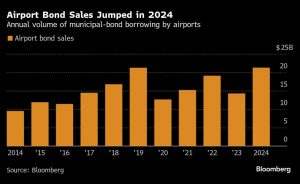
LONDON (Reuters) – U.S. President Donald Trump’s ability to swiftly impose, and then delay, tariffs on top trading partners has left world markets swinging one way and then another.
Last weekend, for example, he announced sweeping tariffs on Canada, Mexico and China, and then on Monday he announced one-month delays for Canada and Mexico.
These moves show that the risk of a global trade war that hurts economic growth and fuels inflation remains high.
“The warning shot that has been fired by the White House has confused the world at large,” said Tina Fordham, founder and geopolitical strategist at Fordham Global Foresight.
“Who’s next? How will we know if we will be on the sharp end of U.S. tariff ire? And how do we respond? Acquiesce, or hit back?”
Here’s where some hard-hit markets stand almost a week after Trump launched his salvo:
1/ SHAKEN LOONIE
Canada’s dollar, has been in the firing line, briefly hitting over 20-year lows before rebounding on the tariff delay, leading to its largest single-day swing in nearly five years.
But the reprieve for the so-called Loonie may not last since the prospect of 25% tariffs remains.
Even if tariffs are avoided, uncertainty could weigh on business activity, keeping Canada on a rate-cutting path.
The loonie ended January down for the fifth straight month, its longest losing streak since 2016; currency volatility remains high. CBA forecasts dollar/Canadian dollar at 1.52 by the third quarter, from 1.44 now.
2/ VOLATILE PESO
Volatility has been embedded in Mexico’s currency since last year, when it lost almost a fifth of its value against the dollar.
The tariff threats, direct and indirect, have seen the peso fall as much as 2.2% this year, and also gain as much as 3.5%.
In a scenario of 25% tariffs, Wall Street analysts expect the Mexican economy to fall into a recession. The peso, which ended January at 20.678 per dollar, is seen weakening to as much as 22 or further per dollar according to BBVA.
This would imply a weakening of more than 7% from current levels.
The peso hasn’t traded beyond 22 since November 2021.
3/ EURO DOUBLE WHAMMY
Trump says the European Union is next in line for tariffs, keeping the euro under pressure.
It has slid 5% since the U.S. election, one of the biggest fallers among major currencies, briefly hitting $1.0125 on Monday — the lowest since late 2022.
Nearly one-third of strategists polled by Reuters reckon the euro could fall to $1 within a year as trade uncertainty hurts the economy.
The U.S. is the EU’s most important trading partner, with $1.7 trillion in two-way goods and services trade.



